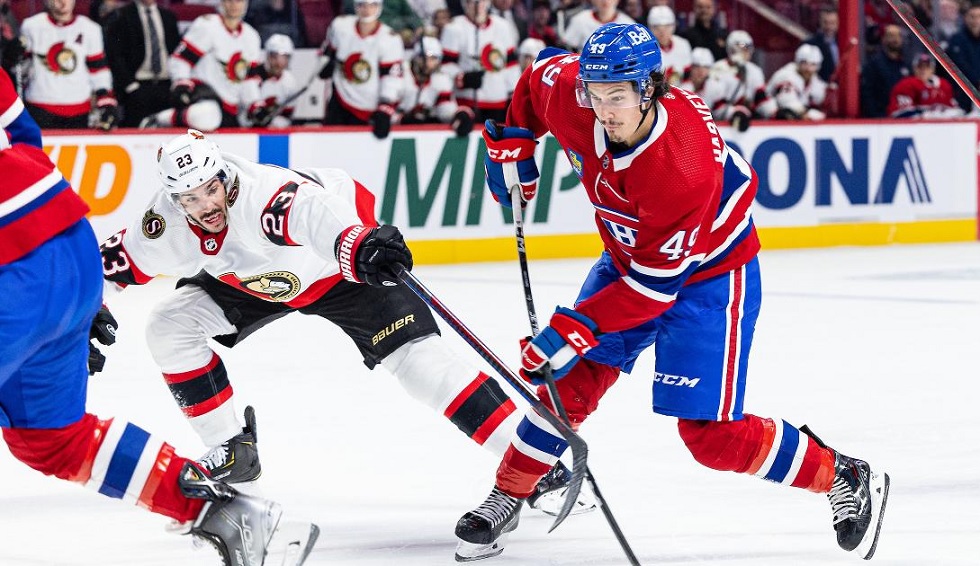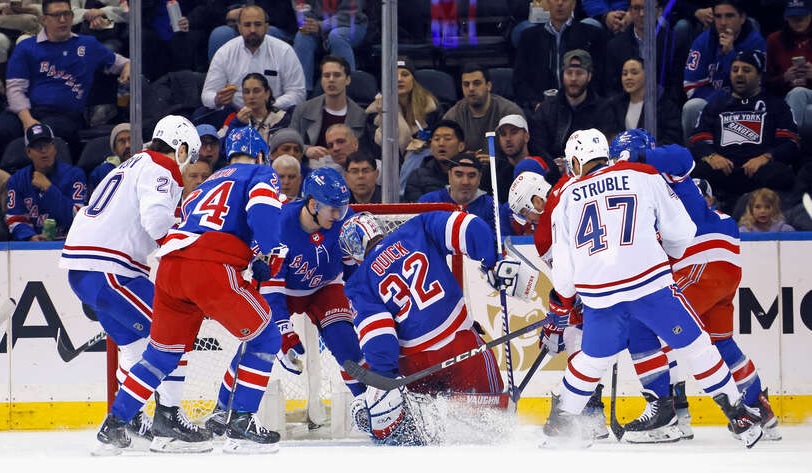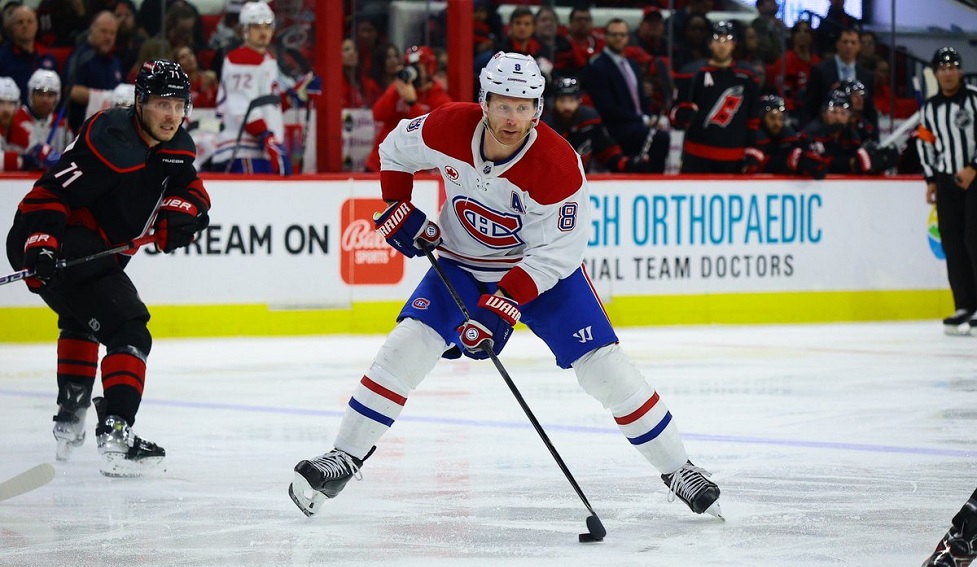HabsWorld.net --
When he traded Jeff Petry, GM Kent Hughes acknowledged his goal is to start the upcoming season with Carey Price on the season-opening roster, allowing them to use in-season LTIR. They have some work to do to get to that point.
At the moment, Montreal sits roughly $3.77 million above the cap, per CapFriendly. In order to achieve their goal of in-season LTIR, they need to clear that much before submitting their season-opening roster the day before the regular season begins. For the purpose of this exercise of determining how to get to compliance, we’ll use the CapFriendly roster for simplicity. Notably, Cayden Primeau isn’t on there so let’s assume he’s either claimed off waivers or he clears and goes to Laval.
At first glance, you might be thinking the easiest path to get there is to send a whole bunch of waiver-exempt players down. That would solve one problem but create another. It’s in Montreal’s best interest to have players with bonuses on that season-opening roster to create what’s known as the bonus cushion. If that cushion isn’t there (or is fully used up), bonuses then count against the cap directly.
This doesn’t happen often but if you’re looking for a recent example, the Rangers ran into that a few years ago. They had so many players on the roster with bonuses in their contracts that they exceeded their cushion. Accordingly, any bonuses over the cushion cut into their cap space. Without going into too many specifics, long story short, it’s ideal to have Juraj Slafkovsky, Kaiden Guhle, and Justin Barron on that season-opening roster, even if they’re among the easiest players to paper to the AHL. That way, they maximize their season-opening bonus cushion.
Assuming the Habs are aware of this (it went into their decision-making last season when Arber Xhekaj was papered down for a day) let’s lock them in on the opening roster. Accordingly, they’ll have to look elsewhere to create those savings.
It’s also worth noting that the maximum that can be cleared by sending a player to the minors is $1.15 million. Anyone making more than that will still count in part against Montreal’s salary cap for the difference.
Okay, enough of the boring part, let’s start digging in. When the Canadiens activate their injured players from the end of last season off injured reserve (they actually haven’t done this yet with Slafkovsky, Xhekaj, Sean Monahan, and Cole Caufield), they’ll have 14 forwards, nine defencemen, and three goalies on the roster. That’s 26 players in total with a maximum roster size of 23 (and if Montreal is getting to cap compliance to start, it’ll need to be even lower than that).
We’ll start with the goalies. Samuel Montembeault is safe while the second spot will go to either Jake Allen or Casey DeSmith. It’s possible that they can carry all three and, honestly, that scenario isn’t crazy if they don’t get a trade offer they like. But for now, let’s assume they carry two on their season-opening roster and aren’t able to trade the other. It doesn’t matter which of Allen or DeSmith is sent down, the net savings is still $1.15 million. Now the gap is $2,627,916.
Onto the defence. With four waiver-exempt players here, this is the easiest way to trim that gap. But remember that Guhle and Barron have bonuses so they need to be on the roster. That’s bad news (on paper, remember) for Xhekaj and Jordan Harris. Sending them down at the end of camp would free up $828,333 for Xhekaj and $1.15 million for Harris (with the remaining $250,000 still counting against the cap). Now the deficit is a much more manageable $649,583, or one player to cut.
Up front, there are two waiver-exempt forwards. Slafkovsky is one while Rafael Harvey-Pinard is the other. We know Slafkovsky needs to be on the opening roster for bonus cushion purposes so the easiest solution is to send Harvey-Pinard and his $1.1 million to Laval and voila, they’re $450,417 under the cap with a roster of 13 forwards, seven defencemen, and two goalies.
It is that simple if they want it to be. The Habs can get into cap compliance with those four roster moves at the end of training camp without needing to make a single trade. Christian Dvorak might not be ready for the start of the year but there’s no rule saying you can’t carry an injured player on an active roster. Montreal is clearly aware of that one as they carried injured players on their active roster many a time last season.
With that roster, Price goes on LTIR and the Habs get $10,049,583 in LTIR space (his $10.5 million cap hit minus any existing cap space). They then can put Dvorak on IR if need be and recall whoever they want as long as they have no more than 23 players on the active roster. This is where carrying three goalies becomes viable while allowing Hughes’ assertion that they didn’t acquire DeSmith to play in the minors to hold true. He’s waived in camp and if he clears, the Habs make the other aforementioned moves, put Price on LTIR, and recall DeSmith into that cap space, proving his claim to be truthful.
If you want to play around a bit more with the math, let’s go back to the number after sending a goalie, Xhekaj, and Harris down. The overage at that point was $649,583. At this point, if the Canadiens are interested in optimizing their LTIR room as much as possible, it’s then in their best interest to send someone making as little as possible. In that case, Chris Wideman and his $762,500 is the right casualty. If they waive him and submit a 14-6-2 roster, they’d be in compliance by just $112,917. That means when Price goes on LTIR, their LTIR spending room would be $10,387,083, $337,500 more than if they sent Harvey-Pinard down. And again, from there, they can bring at least some of the papered players back up.
There are other possible combinations to play with depending on who you might think could be on the roster or not but there’s no point in going through all of them. The end result would put them with LTIR room in the neighbourhood of the two numbers I’ve shown. At this point, you get the idea so I’ll spare you the extra math.
The moral of the story is that while it seems like Montreal is well above the cap ceiling, it’s pretty easy to get below it for the purposes of avoiding offseason LTIR. No trades need to be made, just a handful of roster moves, some of which would be getting made either way with the number of bodies they have on the roster currently. $3.77 million is a big number but right now, they shouldn’t have any trouble clearing that off the books when they go to submit their season-opening roster in early October.


